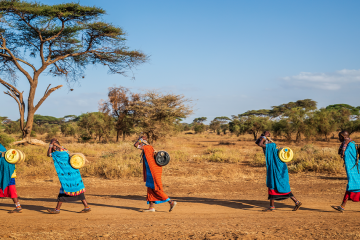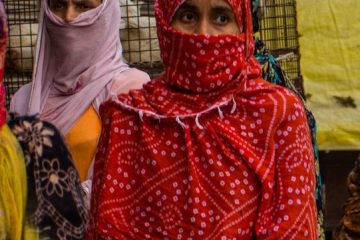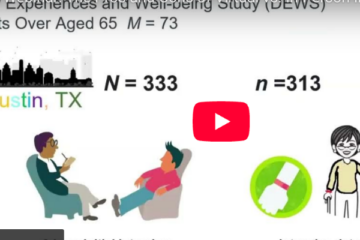
Humans and the environment are inextricably linked. Population size and age, fertility, mobility, settlement patterns, and resource availability and consumption all influence the impact we have on the environment.
Solving the complex challenges facing the world today demands a better understanding of how population growth and change impact the environment, how environmental change impacts human health and well-being, and what can be done to address these issues. PRB’s Population and the Environment activities aim to:
- Increase awareness among decisionmakers, key stakeholders, and advocates about the linkages between population dynamics, human health, and environmental issues, including climate change.
- Build leadership and capacity to advance evidence-based policy and programming solutions that recognize the links between population dynamics and the environment, including Population, Health, and Environment (PHE) multisectoral development approaches.
- Contribute to and amplify evidence on the role of family planning and reproductive health in advancing key development outcomes outside of the health sector, in areas such as women’s empowerment, climate change resilience, food security, nutrition, and agriculture.
- Develop and support international, regional, and country-level networks and communities of practice for information sharing and collaboration on population and environment linkages.
How are population dynamics and the environment linked?
- A PRB-sponsored paper, Making the Connection: Population Dynamics and Climate Compatible Development, identifies approaches and opportunities for advancing policy dialogue and policy action to include population dynamics—with an emphasis on family planning—into climate-compatible development.
- PRB amplifies research globally that links population and the environment, such as in this research highlight of the journal Population and Environment, and these short videos highlighting new research on migration, pollution, and rainfall.
How do family planning and reproductive health contribute to climate change adaptation and resilience?
- PRB has built the evidence base linking family planning and reproductive health to increased resilience to shocks, including climate-related disturbances. This analysis of results from a long-running PHE project demonstrated the definitive impact of family planning in multisectoral approaches in connection with increased climate resilience.
- Family planning and reproductive health have been identified as among the primary climate change solutions. PRB has compiled a comprehensive report, a brief (in English and French), and a video to outline the evidence and support family planning and reproductive health advocates in accessing climate adaptation financing for multisectoral programming.
- Family planning’s contribution to resilience is mapped in this interactive feature, indicating family planning’s contributions to improved educational, economic, and other outcomes.
What is the Population, Health, and Environment (PHE) approach, how does it work, and where is it implemented?
- PRB’s report The Impact of Population, Health, and Environment Projects: A Synthesis of the Evidence consolidates available results from nearly 40 PHE projects, identifying the benefits of integrated approaches to development and conservation, including enhanced outcomes compared to single-sector approaches.
- PRB’s Population, Health, Environment, and Development Activity Map identifies past and current field-based PHE activities and other multisectoral projects, funders, and organizations around the world. Contribute your project to the map here.
- Learn about approaches to advance policy, advocacy, and communication on the links between family planning, reproductive health, and the environment under the PACE Project’s multisectoral programming.
- In collaboration with leading PHE experts worldwide, PRB contributed to creating integrated health and conservation theories of change and PHE project case study theories of change for development practitioners to support PHE program design.
Where can I go to find resources for learning more about or implementing PHE approaches?
- Access updates and information on PHE and population- and environment-related research, policy, and programming with the Global Population, Environment, and Development bimonthly newsletter. Follow @AfricaPHE on Twitter for news and updates.
- Find a curated list of resources to inform PHE policy and programming in this 20 Essential Resources for Population, Health, and Environment collection.
- Visit People-Planet Connection, a website for the PHE community to connect, share resources, engage in dialogue, and follow updates.
- Explore PRB’s PHE Global Health E-Learning Course, which includes modules on policy, advocacy, and communication; scale up; and the Sustainable Development Goals, as well as information on PHE linkages with climate change adaptation and mitigation. The course is available in English, French, and Spanish.








